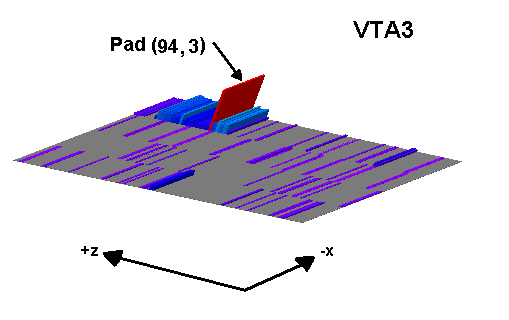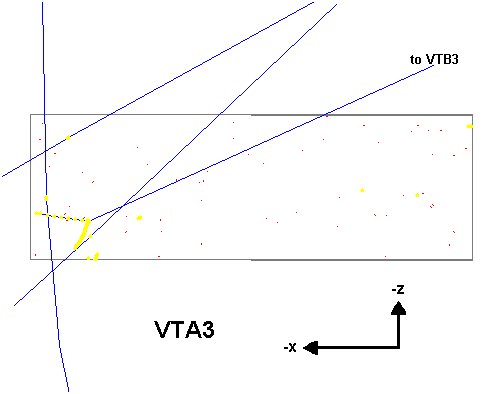

This page stems from Barbara Wosiek's presentation at the January 2000 collaboration meeting. In her talk she showed four events from her HIJING sample that showed unusual reconstruction from the multiplicity package. She looked at one event (number 38) in great detail. She found that in pad (94, 3) in VTA3, a pi+ interacted with a silicon nucleus and produced six secondary protons and a secondary pi+ which decayed into a mu+ inside the pad (plus other neutral fragments which our detector is not sensitive to). There was also another primary pi- that went through the same pad.
Here is that event show below. The ADC value for each pad is given by the color scale shown on the right. The ADC for pad (94, 3) was truncated from the given value of 5507 to the maximum range of our chips (4095).


The same event is shown below using the Monte Carlo information. The yellow dots are secondary hits, the blue lines are secondary tracks and the red lines are primary tracks. The intersection of the two secondary tracks (that form a "V") with the yellow dots is pad (94, 3). Those tracks are two of the six secondary protons. The other four protons each register only a single hit. The secondary track that says "to VTB3" is the mu+ that results from the decay of the secondary pi+.

I hope to be able to look at the other three events and display them here at sometime in the future.